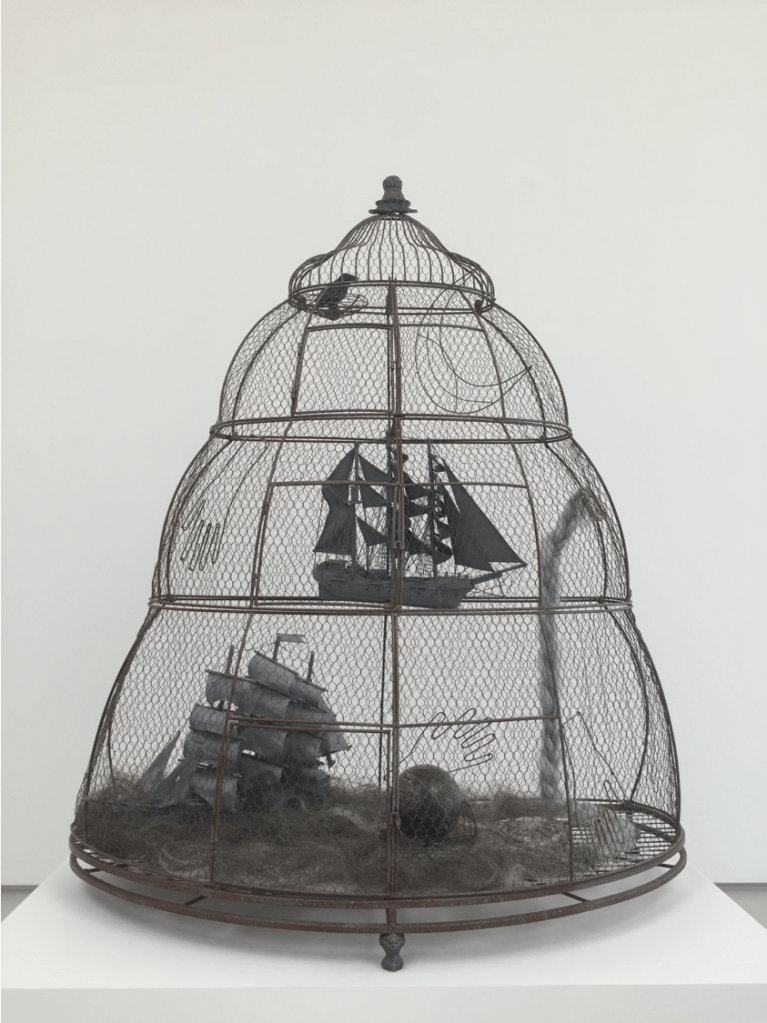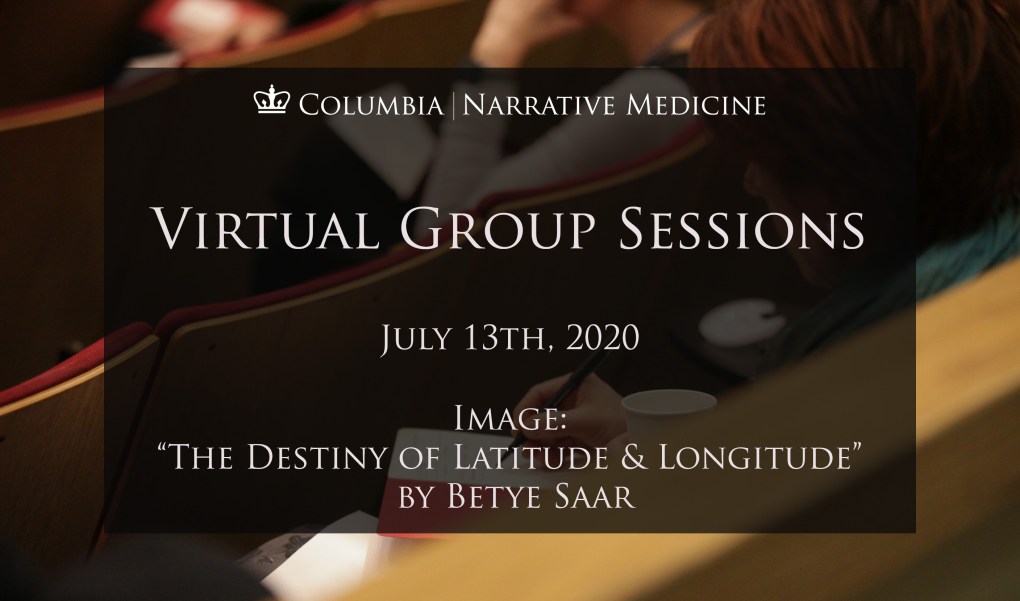With participants from around the U.S., Canada, the U.K. and India, we jumped into a discussion of the assemblage, “The Destiny of Latitude and Longitude” by Betye Saar. Participants began by observing what they saw in the piece, noting the shape of the cage, which for some evoked the image of a beehive and for others had very feminine resonances, of a breast or of an antebellum hooped skirt. The sailing vessels opened up a lot of speculation, recalling the pirate ship in Peter Pan and the world of childhood imagination; at the other end of the spectrum, some saw the history of the Middle Passage, of slave ships. The dangling piece of rope suggested bondage, the lynching noose, and, for some, a lost promise of escape. The hands reaching out in different directions were seen as “asking for help” or “reaching out to lift up.” The facilitators noted that the artist, Betye Saar is African American, and that this piece (from 2010) was part of a series of works all contained in cages of different shapes. The discussion turned to the art of assemblage, the repurposing of objects, a thing known in one context that is transformed when placed in a new context. The African-American artistic tradition of re-purposing found objects was noted. The surprising and marvelous experience of the piece, some suggested, was in part accounted for by the beauty and charm of the objects, including the rather innocent rendering of a crescent moon, the toy-like ships, and the small bird seeking, it seems, a way out of the cage, in such startling combination with the hints at the horrors of the Slave Trade. One participant observed that the piece made her feel like she couldn’t breathe.
The prompt was: Describe an object you own that says something about your or your family’s history, and the responses were wonderful and varied, fig trees, a bronzed golfball, a desk lamp, a genetic marker for twins. There was also an interesting and unexpected common thread of references to grandparents that manifested in the writing that was shared.
Participants are warmly encouraged to share what you wrote below (“Leave a Reply”), to keep the conversation going here, bearing in mind that the blog of course is a public space where confidentiality is not assured.
Also, we would love to learn more about your experience of these sessions, so if you’re able, please take the time to fill out a follow-up survey of one to two quick questions!
Please join us for our next session Wednesday, July 15th at 12pm EDT, with more times listed on our Live Virtual Group Sessions page.
We look forward to seeing you again soon!



14 thoughts on “Live Virtual Group Session: 6pm EDT July 13th 2020”